There is a vehicle that is chic enough to turn heads at a Hollywood premiere and rugged enough to handle any terrain.
Its exceptional durability and reliability made it quite popular in the market in its early years and throughout history.
I’m talking about the iconic Toyota Land Cruiser, the car built to last and capable of withstanding a-n-y-t-h-i-n-g!
Although not famous as the best-selling Toyota, the iconic FJ model is known for its vintage looks, paired with modern features and technology. It is part of the Land Cruiser series, known for its toughness, reliability, and off-road prowess.
This beauty was made by Toyota Motor Corporation, a company with a storied history of innovation and quality.
Founded in 1937 by Kiichiro Toyoda, Toyota Motor Corporation is a Japanese multinational automotive manufacturer based in Toyota City, Japan.
Over the years, Toyota has grown into one of the world’s largest car manufacturers, and it is celebrated for its advancements in automotive technology, efficient manufacturing, and dedication to quality.
The Land Cruiser FJ is a blend of excellence and modern innovation.
To learn more about this historic vehicle, grab yourself a cup of hot coffee, and scroll down!
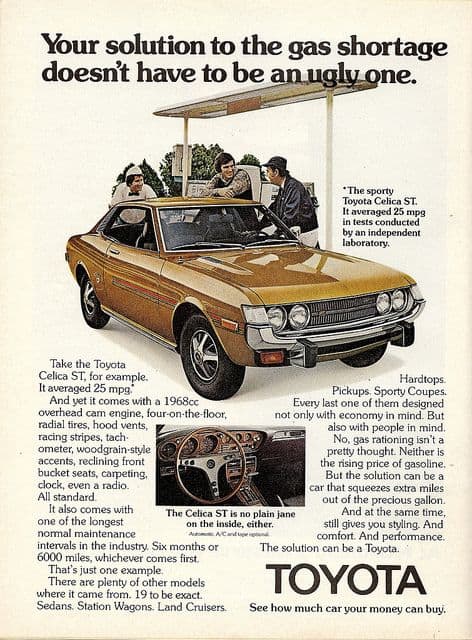
Source: rvinyl.com /Pinterest
Key Takeaway
- The Toyota Land Cruiser is a classic vehicle known for its durability, reliability, and off-road capabilities, capturing the interest of vintage car enthusiasts.
- The FJ40 series, produced in the 1960s, is one of the most iconic models, featuring a rugged design, versatile body styles, and various performance upgrades over the years.
- Restoring and modifying a Land Cruiser involves balancing modern enhancements with preserving its vintage charm, including upgrades to suspension, brakes, and interior features.
- When buying a 1960s Land Cruiser, thorough inspection and maintenance are crucial to ensure its longevity and authenticity, making it a valuable addition to any car collection.
Evolution from Toyota Jeep BJ to Land Cruiser
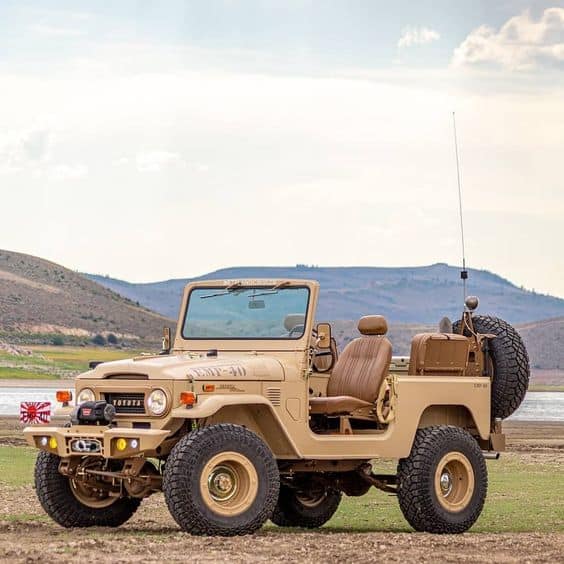
Source: superessestraps.com/Pinterest
The history of the Land Cruiser started with the Toyota Jeep BJ in 1951.
It was originally designed for military purposes, featuring a sturdy design and the ability to handle challenging terrains. The BJ was equipped with a strong 3.4-liter six-cylinder engine and demonstrated its capabilities by ascending to the sixth station of Mount Fuji.
In 1954, the BJ was rebranded as the Land Cruiser to rival the British Land Rover.
The early models, such as the 20 series, boasted significant improvements in performance and comfort, broadening their appeal beyond military and industrial use.
The 40 series, made from 1960 to 1984, is the most iconic model. It’s known for its versatility and durability, making it a favorite among off-road enthusiasts. It remained unchanged for over two decades, proving how well it was engineered.
The modern FJ cruiser, introduced in 2006, paid homage to the 40 series with its retro design elements.
It features a 4.0-liter V6 engine, advanced off-road capabilities, and modern equipment. Although production ended in 2014, the FJ Cruiser remained a beloved model among enthusiasts for its unique nostalgia and contemporary performance blend.
1960s Toyota Land Cruiser Models
Let’s take a look at some of the 1960s models of the popular Cruiser!
FJ40 Series (1960-1969)
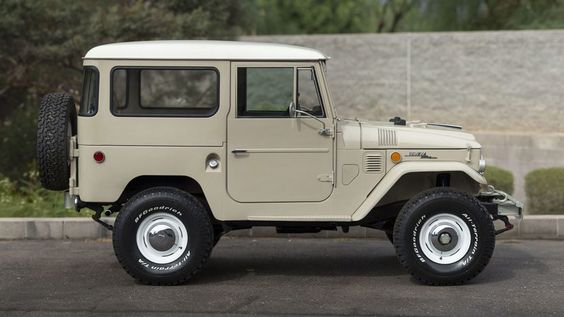
Source: mecum.com/Pinterest
The FJ40 series was produced from 1960 to 1969 and is one of the most iconic models in the Toyota Land Cruiser lineup. It featured a boxy design with a short wheelbase, which contributed to amazing off-road capabilities.
It was equipped with a range of inline six-cylinder engines.
It was a standard four-wheel drive vehicle and available in various body styles, including soft-top, hard-top pickup, and wagon. It was available as a short wheelbase (SWB) FJ40 and a long wheelbase (LWB) FJ43.
The short wheelbase (SWB) FJ40 version featured a two-door body style with a removable hard top or soft top.
It offered seating for four and a versatile cargo area, ideal for recreational and practical purposes. The Long-Wheelbase (LWB) FJ43 was a longer version, providing additional cargo space and seating. It was available in two-door and four-door configurations and was used for commercial and agricultural purposes.
The FJ45 pickup was a truck variant with a longer wheelbase, featuring a regular or crew cab with a cargo bed. It was used in construction and farming because it could carry heavy loads.
The FJ45 troop carrier, known as a “Troopy,” had an extended body that carried more passengers. Military and expedition groups used this type of Toyota Land Cruiser for its capacity and reliability in harsh environments.
The Station Wagon (FJ45V) was a fully enclosed wagon version that offered more comfort and protection. It was ideal for families and those who needed more secure storage space.
Key Model Year Changes
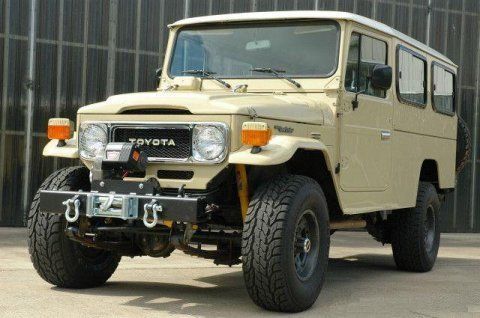
Source: bringatrailer.com/Pinterest
In the world of cars dominating the 1960s, the FJ40 series replaced the older 20 series. The initial models came with a 3.9-liter inline-six engine (F engine) and a three-speed manual transmission.
In 1963, the FJ45 model variants were introduced, which included the pickup and troop carrier versions.
In 1965, upgrades were made to the braking system, including dual-circuit brakes, which enhanced safety and stability. The engine was upgraded in 1967 to a 3.9-liter inline-six engine (2F engine), which provided better performance and fuel efficiency, along with some interior features for additional comfort.
In 1968, front disc brakes were introduced to enhance the vehicle’s stopping power and overall safety.
Further improvements in both interior and exterior design took place in 1969, including enhanced seats, a modified dashboard layout, and more customization options.
Technical Specifications and Features
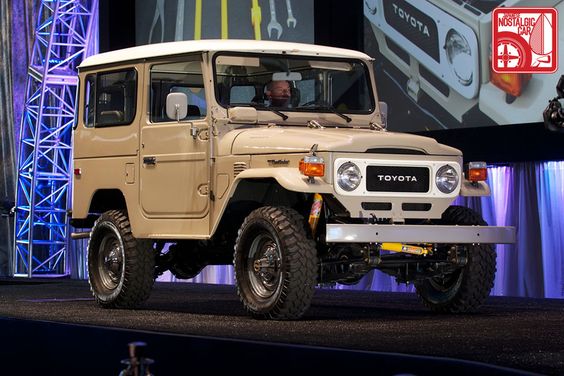
Source: japanesenostalgiccar.com/Pinterest
The Toyota Land Cruiser had a strong F engine, starting with a 3.9-liter inline-six petrol engine, later improved to the 3.9-liter 2F engine in the late 1960s.
This engine produced 125 horsepower and 209 lb-ft of torque, ensuring reliable performance in various conditions.
The vehicle came with a manual transmission, initially a 3-speed and later upgraded to a 4-speed, featuring smooth H-pattern shifting.
The optimized gear ratios provided good performance on and off-road, with a low-range transfer case for extra torque in tough terrains.
The Land Cruiser’s adaptable four-wheel drive system allowed switching between 2WD and 4WD, with high-range and low-range gearing for versatile off-road use.
Different body styles were available to meet various needs. The short wheelbase (SWB) model had a two-door body with a removable hardtop or soft top. It seated four passengers and had fold-down rear jump seats for more cargo space.
The long wheelbase (LWB) FJ43 offered more cargo space and seating for up to six passengers in both two-door and four-door versions.
The FJ45 Pickup was great for transporting goods in construction and farming, while the FJ45 Troop Carrier was suited for military and expeditions. The Station Wagon served as a family vehicle for camping and carrying sports equipment.
Performance and Popular Upgrades
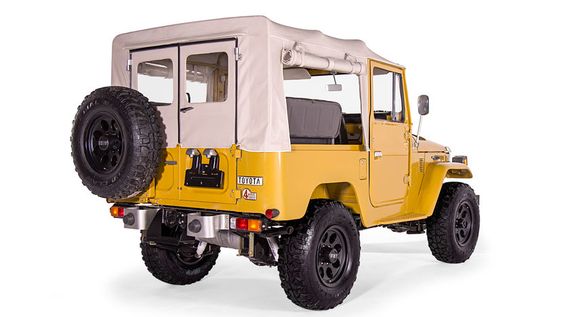
Many car enthusiasts and owners wanted to enhance their vehicles with popular upgrades and accessories to improve comfort, safety, and driving experience, similar to how vintage Ford models have been modified with modern features to retain their classic charm while providing a better ride.
One of the most common upgrades for the standard FJ40 was the addition of power steering. The original models came with manual steering, which could be challenging during low-speed maneuvers and off-road driving.
Upgrading the car to power steering improved handling and reduced driver fatigue.
For improved safety, owners often installed front disc brakes.
The original FJ40 had drum brakes, which could fade under heavy use, especially on demanding terrain. Upgrading to front disc brakes provided better stopping power, improved heat dissipation, and more consistent braking performance.
The FJ40 was built for rugged terrain and tough conditions; comfort wasn’t the top priority.
However, many owners chose to install air conditioning units, especially in regions with hot climates, to make their driving experience more comfortable and enjoyable.
Upgrading to air conditioning involved fitting an aftermarket A/C system, which significantly improved the Land Cruiser’s suitability for long-distance travel and everyday use and provided a more relaxed and comfortable environment for the driver and passengers.
Restoration and Modification
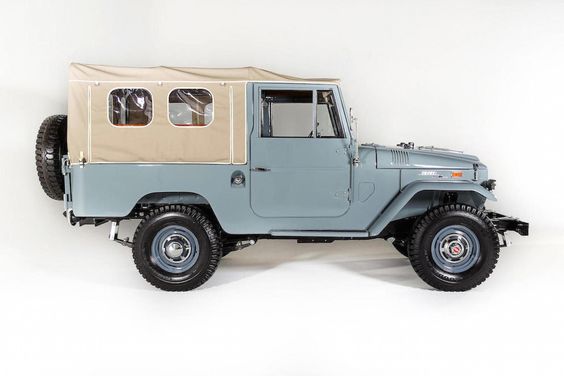
Source: silodrome.com/Pinterest
When restoring a classic Toyota Land Cruiser, it’s essential to strike a balance between modern upgrades and maintaining its vintage charm.
Careful modifications can enhance performance and comfort. If replacing the original engine, ensure the new one keeps the classic feel. Consider upgrading suspension components like shocks, springs, and sway bars to improve ride quality, handling, and off-road capability.
Upgrading from drum brakes to modern disc brakes can improve safety in modern conditions but may affect the classic look and require adjustments to wheel size and brake components.
For interior upgrades, add features like air conditioning, modern seats, and updated audio systems. Replace original headlights and taillights with modern LED or HID lights, and consider all-terrain tires and modern wheels that still resemble the original design for a vintage look.
To maintain the vehicle’s classic appeal, focus on preserving key original elements, such as the exterior design and dashboard layout, and make reversible modifications whenever possible.
Collecting and Investing in 1960s Land Cruisers
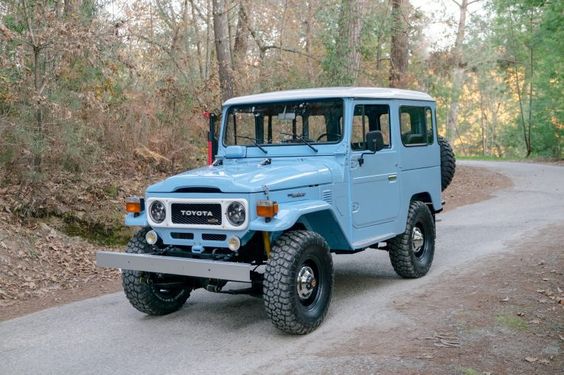
Source: silodrome.com/Pinterest
Collecting and investing in vintage cars is a fantastic idea, especially for iconic models like the Toyota Land Cruiser.
The price of a 1960s Toyota Land Cruiser can vary based on condition, originality, mileage, and restoration quality. A fully restored, high-quality 1960 FJ40 Land Cruiser can range from $30,000 to $60,000. Prices fluctuate based on the quality of the restoration and the presence of rare features.
An unrestored, original model in good condition can be found for $20,000 to $40,000, depending on mileage and overall preservation.
A 1960 FJ40 requiring significant work or restoration may be available for $10,000 to $20,000, depending on the extent of the necessary repairs and restoration.
The best idea is to buy it from a private seller.
Research the market and join forums to understand pricing trends!
Buying a 1960s Toyota Land Cruiser
Vintage car enthusiasts have always been fascinated by the Land Cruiser. When you buy one, you’re not just getting a car; you’re becoming part of a legacy.
Check the body for rust, dents, and signs of previous repairs. Inspect the seats, dashboard, chassis, axle, and controls. Ensure the engine runs smoothly without excessive noise and smoke and that the transmission shifts well.
Examine the suspension for wear, such as shocks, springs, and bushings. The steering should be responsive without excessive play. Verify that all lights, gauges, and electrical components work properly. Check maintenance and repair records to understand the vehicle’s history and care.
Make sure the title is clear and verify the VIN. If you don’t drive the Land Cruiser regularly, store it in a dry area to prevent rust and deterioration. Use original or high-quality replacement parts to maintain their authenticity and performance whenever possible.
Conclusion
The 1960s Toyota Land Cruiser FJ40 is known for its distinctive design, durability, and reliability. With proper care and maintenance, it can be driven year-round and for many years.
So, why not consider getting one for your garage?
With this brand and its proven excellence over the years, you’re not just buying a car for your collection but investing in a lifestyle of adventure and new memories waiting to be made with this machine!
